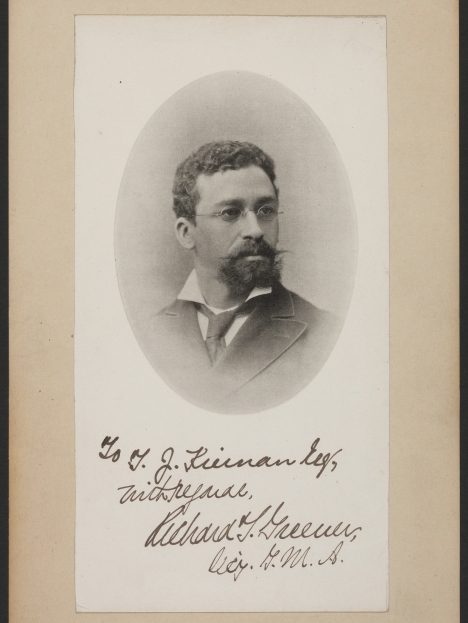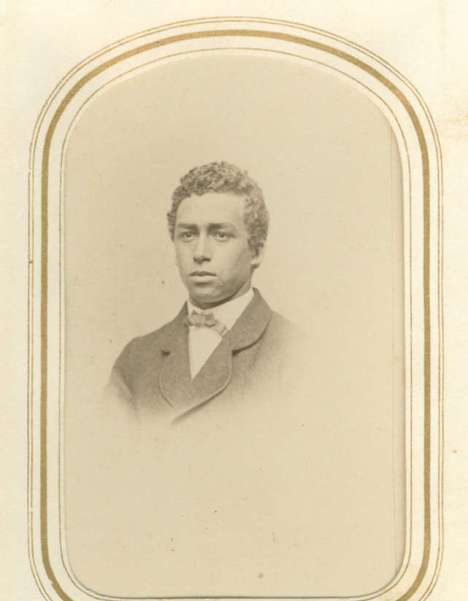Harvard’s first Black graduate, Richard T. Greener, went on to become the first Black professor at the University of South Carolina and dean of the Howard University School of Law.
Greener was born in Philadephia on this day in history, moving with his family to Cambridge, Massachusetts at age nine. He dropped out of school at age 11 to help support the family, after his father went to seek fortune in the California Gold Rush and never returned.
The odd jobs he did in Cambridge enabled him to establish friendships with Harvard-connected elites, including Judge Thomas Russell, who made his personal library available to Greener. As a Harvard history reports, Greener also went on boating excursions along the Charles River with Oliver Wendell Holmes, Sr.
Several years later, Greener’s employer, a jeweler named Augustus Batchelder, funded his education at Ohio’s Oberlin Academy and later the prestigious Philips Academy in Andover, Massachusetts, all to prepare him for admission to Harvard. Batchelder, the Harvard history of Greener reports, “was itching to see the educational experiment of a black student succeeding at Andover carried on to Harvard.”
Greener was admitted to Harvard at age 21 in 1865. As the only Black at Harvard, he lived an isolated existence, later recalling that “white students spread rumors about him, including ‘that I had escaped from slavery with innumerable difficulties; that I came direct from the cotton field to college; that I was a scout in the Union army; the son of a Rebel general, etc.’”
Yet Greener persisted. He performed well academically and was involved in extracurricular activities. He won the Bowdoin Prize for a thesis on Irish land tenure. He graduated in 1870 with honors.
He began his professional career as a teacher and principal at the Institute for Colored Youth in Philadelphia (now the historically Black Cheyney University of Pennsylvania) and principal at Sumner High School in Washington, D.C. In 1873, he became the first Black professor and the youngest faculty member at South Carolina College (now the University of South Carolina), where he taught metaphysics, Latin, Greek, and constitutional history.
[The desegregation in South Carolina was only temporary, however, and when Union troops withdrew in 1877 the school closed, reopening in 1880 for whites only. The troop withdrawal was the result of the Compromise of 1877, an informal agreement by which Southern Democrats agreed not to block the election of Republican Rutherford Hayes as US President on the condition that Republicans withdraw all federal troops from the South, thus consolidating Democratic control over the region. This effectively brought an end to the Reconstruction Era and enabled Jim Crow laws to be put into place throughout the South.]

Portrait of Richard T. Greener, circa 1885. HUP Greener, Richard T. (3a), olvwork361109. Harvard University Archives.
Greener then turned to law, opening a practice in Washington, D.C., and teaching at Howard University’s law school, where he was appointed dean in 1879.
The MassMoments history site reports that Greener left Howard in 1881 to open a private law practice and soon became known for defending victims of injustice and discrimination.
As Harvard reports, in 1883, Greener engaged in public debate with Frederick Douglass over the future of Black leadership and politics. Greener was opposed to strategies that relied upon political parties and white allies, while Douglass urged young Black activists to work within the system. “The two men, both brilliant and passionate, became fierce opponents.”
In 1898, Greener became the first African American diplomat to represent the United States in a white majority country when he was appointed to a post in Russia, leaving his wife and children behind. He was also appointed to diplomatic positions in India and China. When he returned to the United States, Greener took up a quiet life, settling on the South Side of Chicago with relatives and working as an insurance agent, practicing law, and giving lectures. He died in 1922 at age 78.
Filed under: legal | Tagged: Black History |





Leave a comment